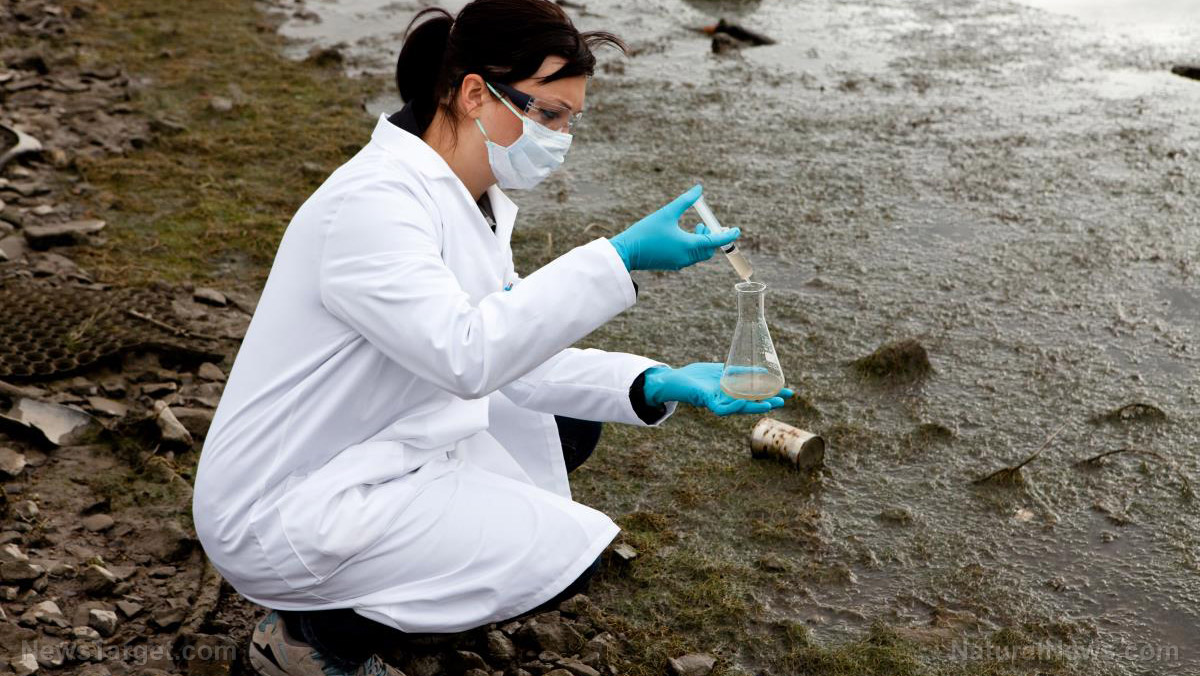50,000 Texans have high levels of arsenic in their tap water, finds Austin-based environmental group
03/25/2016 / By Julie Wilson

Some 50,000 Texans are drinking tap water contaminated with potentially unsafe levels of arsenic, according to a Washington, D.C.- and Austin-based environmental group. The Environmental Integrity Project (EIP) reviewed more than a decade’s worth of data and discovered that 34 Texas communities “have violated the Safe Drinking Water standard for arsenic,” for at least the past 10 years.
Under the federal Safe Drinking Water Act, municipalities are required to limit arsenic concentrations to less than 10 parts per billion (ppb), but after reviewing data from the Texas Commission on Environmental Quality, the group learned that these recommendations have been violated in numerous communities for more than a decade.
Public drinking water in many communities significantly exceeded the recommended limit for arsenic, a known carcinogen linked to skin, lung, bladder, kidney and liver cancer, according to Environmental Health Perspectives. Prolonged exposure may also impair a person’s neurological, respiratory and immunological systems, as well as cause other serious illnesses and death.
Contaminated tap water placing Texans at risk
For example, Jim Hogg County, located southwest of Laredo in South Texas, has tap water containing arsenic levels more than five times the federal government’s recommended limit, or 50 ppb, reports EIP. The roughly 5,000 people who live there have been forced to tolerate this contamination for at least two years, according to state records.
Another example includes Seagraves, a small town about an hour southwest of Lubbock. For more than 10 years, its tap water has tested positive for arsenic levels three times the recommended limit.
State health officials have downplayed the contamination, arguing that it does not pose a health threat because recommended limits for arsenic are “overly cautious,” The Texas Tribune reported.
Some of the communities are trying to address the contamination, but contradictory responses from government often hinder that effort.
When drinking water providers uncover violations, state and federal laws force municipalities to warn residents that prolonged arsenic exposure above the 10 ppb limit can cause cancer, but they are also told it is “not an emergency,” and that they don’t need to switch water sources.
“Telling consumers they don’t need to replace water contaminated by arsenic implies the water is still safe to drink,” said Ilan Levin, director of EIP’s Texas office. “It seems unlikely that that [sic] state regulators who advise the public about health risk would let their own families keep drinking water that violates Safe Drinking Water Act limits for arsenic, year after year.”
Regulators in Wis., Wash., and sometimes Mich., take a different stance, telling residents not to drink the water if it contains arsenic levels above 10 ppb. But as we saw in Flint, water contamination and the health effects that ensue can happen just about anywhere, especially in low-income neighborhoods.
Avoiding another “Flint”
The water crisis in Flint, Mich.,was the catalyst for EIP’s analysis.
“The drinking water tragedy in Flint, Michigan, reminds us how important it is for government to communicate clearly with residents who are drinking contaminated water,” said Eric Schaeffer, Executive Director for EIP and Former Director of Civil Enforcement at the Environmental Protection Agency.
“Whatever their intent, the Texas health advisories suggest to these residents that it is safe to drink water with so much arsenic it flunks Safe Drinking Water Act standards. EPA needs to step in and require Texas to issue clearer warnings and do more to fix the problem.”
A similar project is being organized by the nonprofit Consumer Wellness Center, which is conducting tap water analysis of more than 100 U.S. cities, looking for high levels of heavy metals.
Once they have their results, they will be documented digitally on a U.S. map for everyone to view.
The following includes a few goals EIP hopes to achieve:
- Texas stop requiring language in its public health advisories that implies that water that keeps failing Safe Drinking Water Act standards is safe to drink.
- EPA revise its regulations to require that states advise people to stop drinking or cooking with water that fails to meet arsenic standards over several years.
- The federal and state governments provide enough money to these 65 Texas communities to help pay for water filtration systems or take other steps to eliminate the contamination.
- Public notices inform consumers of options for treating contaminated water, e.g., through filter systems that have proven to be effective. Conversely, the public should be told what doesn’t work. For example, while Texas advisories warn that boiling water won’t reduce nitrate concentrations, it includes no such warning for arsenic, which also cannot be boiled away.
Sources:




















